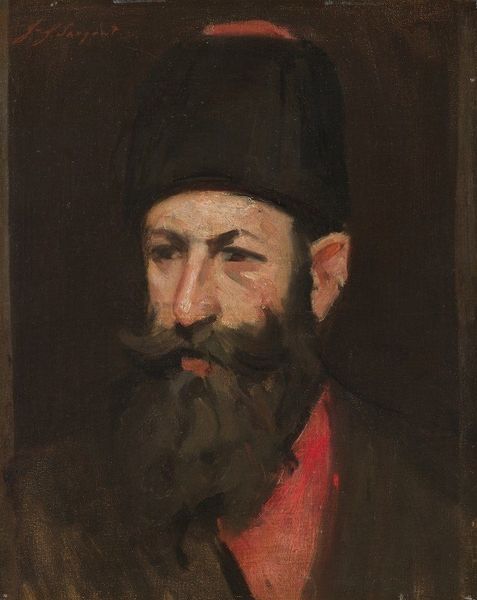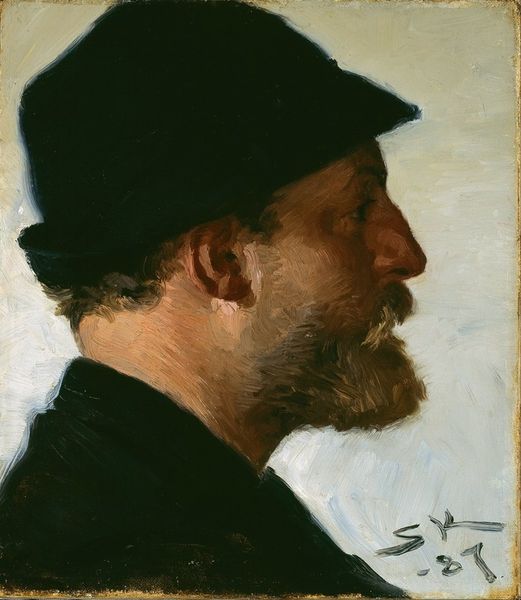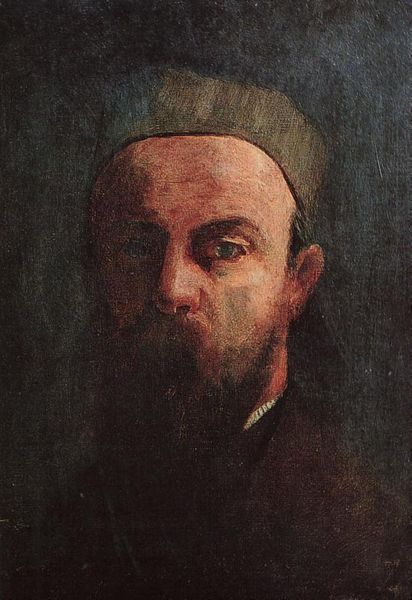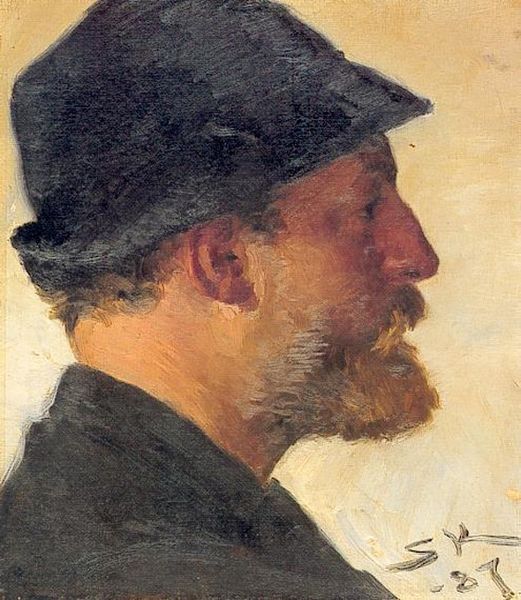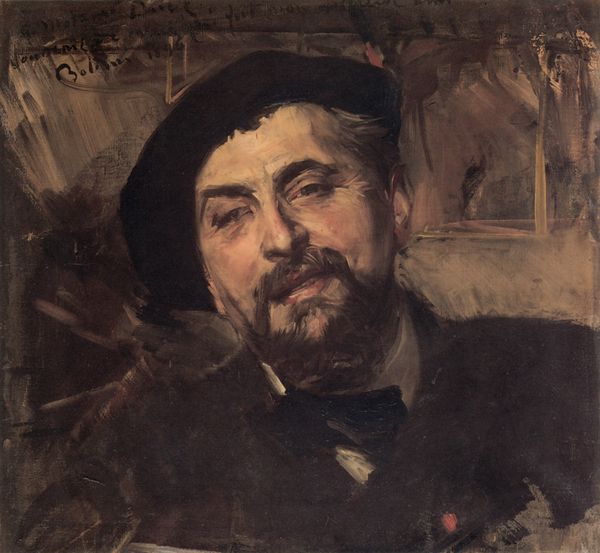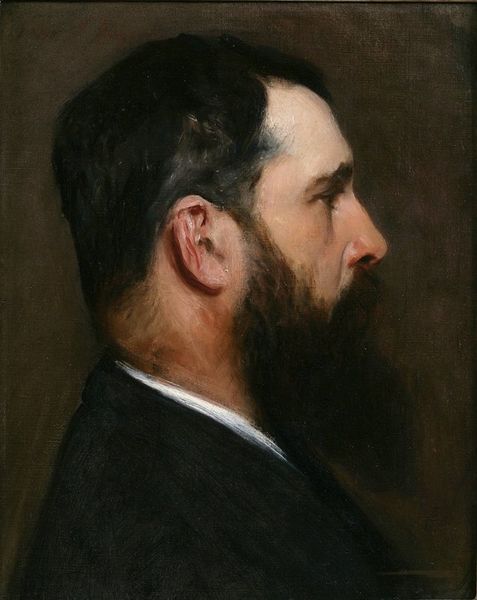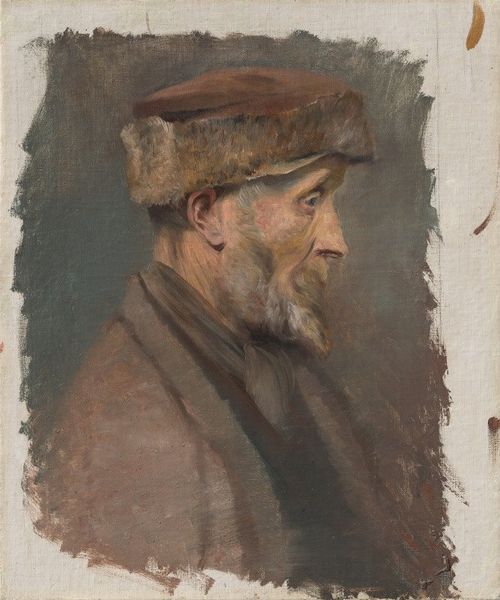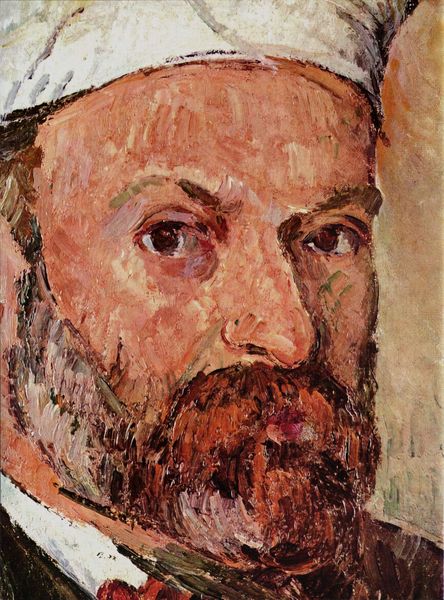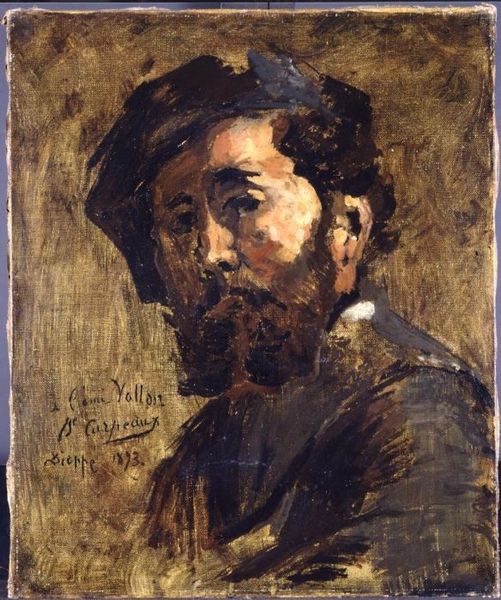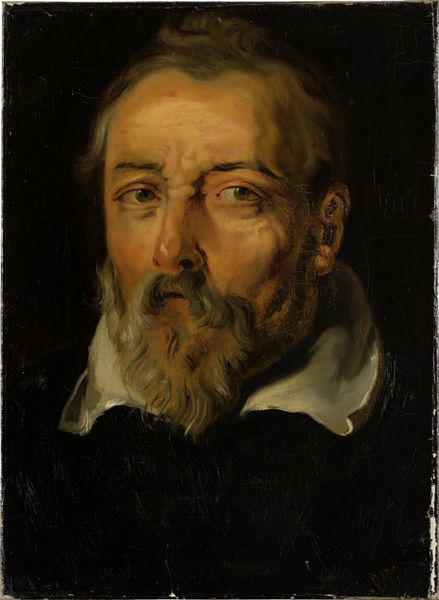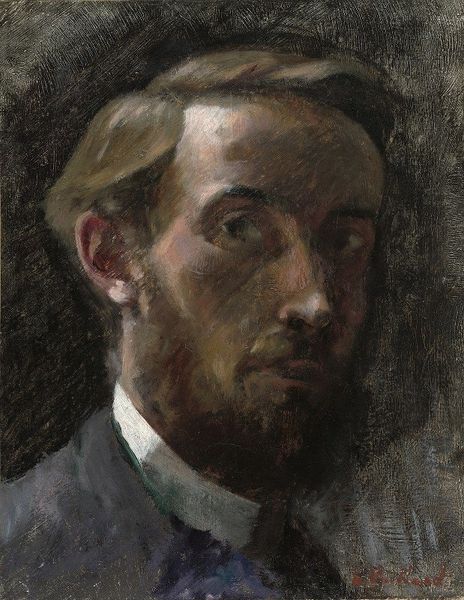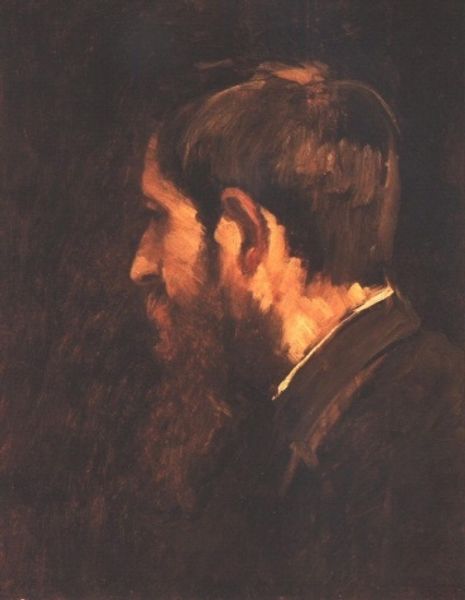
oil-paint, impasto
#
portrait
#
oil-paint
#
oil painting
#
impasto
#
northern-renaissance
#
modernism
#
realism
Copyright: Public Domain: Artvee
Editor: This is Peder Severin Krøyer’s oil painting, "Henrik Pontoppidan," from 1908. The subdued palette gives it a rather contemplative mood, almost melancholic. What stands out to you? What symbols do you notice here? Curator: Immediately, I'm struck by the profile view – a classic pose throughout art history, often associated with depicting rulers or figures of importance. Here, it suggests a focus on the intellectual. The cap could be interpreted as a symbol of the artist or intellectual, setting him apart, subtly coded into the composition. How does the light play a role? Editor: It definitely emphasizes his features, like the sharpness of his nose and the texture of his beard. It brings a certain realism to his face, making it feel intimate. Curator: Exactly. That interplay of light and shadow adds depth. Note how Krøyer uses visible brushstrokes. Consider this: What emotion or social value does this visible technique communicate? Is it about sincerity, process, or perhaps a new mode of directness? Editor: Maybe it signifies authenticity, a deliberate choice to avoid a more polished, idealized representation. It invites a viewer into the artistic process itself. Curator: Precisely. And that resonates deeply with Modernist ideals emerging at the time. Do you think the painting conveys a specific message about Pontoppidan himself, or about the role of the intellectual in society more broadly? Editor: I think it's both. The individualized features emphasize Pontoppidan's unique identity, while the subtle symbolic elements you pointed out elevate the portrait beyond a mere likeness, and explore broader themes. It's quite complex! Curator: Agreed! Analyzing these intertwined layers is how we unpack an image’s full power and cultural resonance. Thanks for bringing this artwork into such a sharp relief. Editor: Thank you! I will definitely think about cultural symbols more actively from now on!
Comments
No comments
Be the first to comment and join the conversation on the ultimate creative platform.
